Save the Western Ghats: The Invasive species problem
 Sep 12, 2015 • 7:44 PM UTC
Sep 12, 2015 • 7:44 PM UTC Unknown Location
Unknown Location 140x Magnification
140x Magnification Fungi
Fungi
laksiyer
Human observer of life. https://sukshmadarshin.wordpress.com
97posts
1255comments
5locations
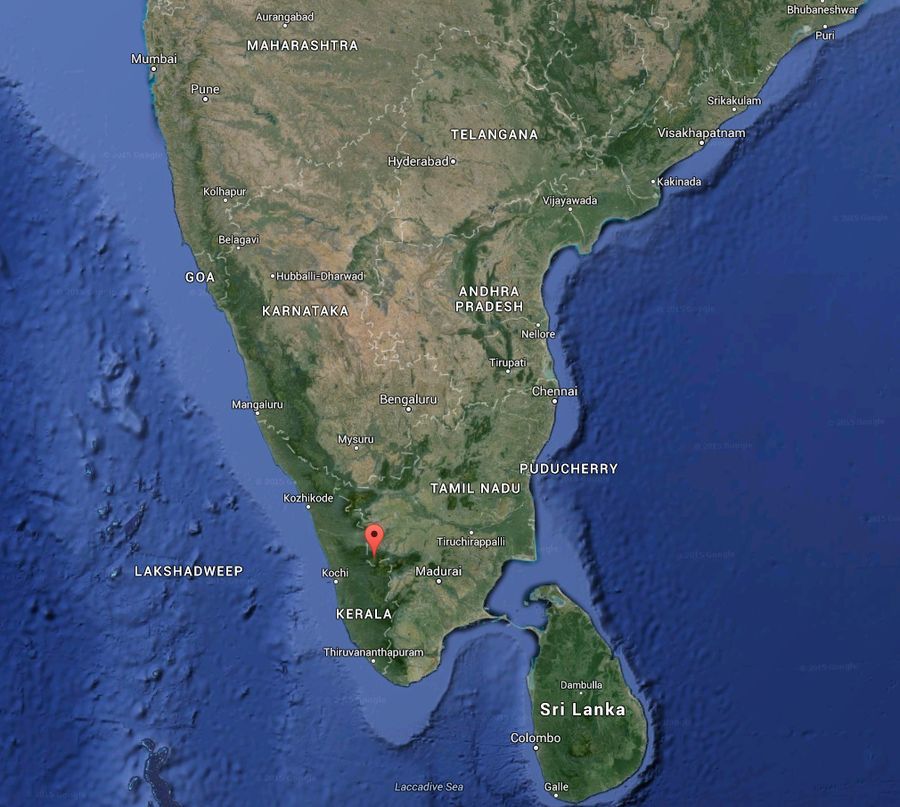
Figure 1. Valparai in context of the western ghats The Western Ghats are a 1000 mile long mountain range running along the west edge of India and are one of the hotspots of biological diversity. I spent my childhood in these hills in a small town (Panchgani) with tales of tigers, hunters, hyenahs and cobras. Even 30 years ago, the region I lived in was shaved off of the native trees with a few patches of disconnected dense forests. The last tiger was seen in the 1940s in my part of the ghats. With the alarming dwindling of forest canopies, the Government of India cordoned off areas of the western ghats to protect the handful of unique ecosystems that remain. There are some excellent projects like Project tiger to protect the 2000 odd Bengal tigers that have survived. But it remains to be seen if the damage is already done. Last month I happened to get my first ecology lessons at another location in the ghats, Valparai.
Valparai (Figure 1) is a tea producing area where in the late 1800s, much of the plant biodiversity was removed and replaced by rows and rows of tea ( Camellia sinensis , plantations (Figure 2A). It is about 100 km from the town of Coimbatore in the south of India, Tamil Nadu. On thw way to Valparai, you occasionally get glimpses of the old forest with inhabitants such as the almost extinct lion tailed macaque(Figure 2B), the Tahr goat and the extraordinary flame of the forest ( Butea monosperma Figure 2C).
Valparai (Figure 1) is a tea producing area where in the late 1800s, much of the plant biodiversity was removed and replaced by rows and rows of tea ( Camellia sinensis , plantations (Figure 2A). It is about 100 km from the town of Coimbatore in the south of India, Tamil Nadu. On thw way to Valparai, you occasionally get glimpses of the old forest with inhabitants such as the almost extinct lion tailed macaque(Figure 2B), the Tahr goat and the extraordinary flame of the forest ( Butea monosperma Figure 2C).

Figure 2. Various snapshots from Valparai. From L to R and top to bottom: A) Tea estates, B)Lion-tailed Macaque, C) Flame of the Forest tree, D) Hairpin bends along route The climb from Pollachi (my starting point) to Valparai has 40 hairpin bends and each of these is a sight to behold (Figure 2D). After 20 bends, I was pleasantly surprised by rows and rows of these wonderful flowers of different colors that were blooming everywhere. The flowers were on the end of a stem and in clusters. The flowers while small had a very distinct odor and were always secreting something, possibly honey I thought. They were a favorite of butterflies and this was truly a sight to behold. I thought I was finally beholding the Ghats in its pristine state. Of course the flower had to be foldscoped. Note: click on the picture for high-res pictures.
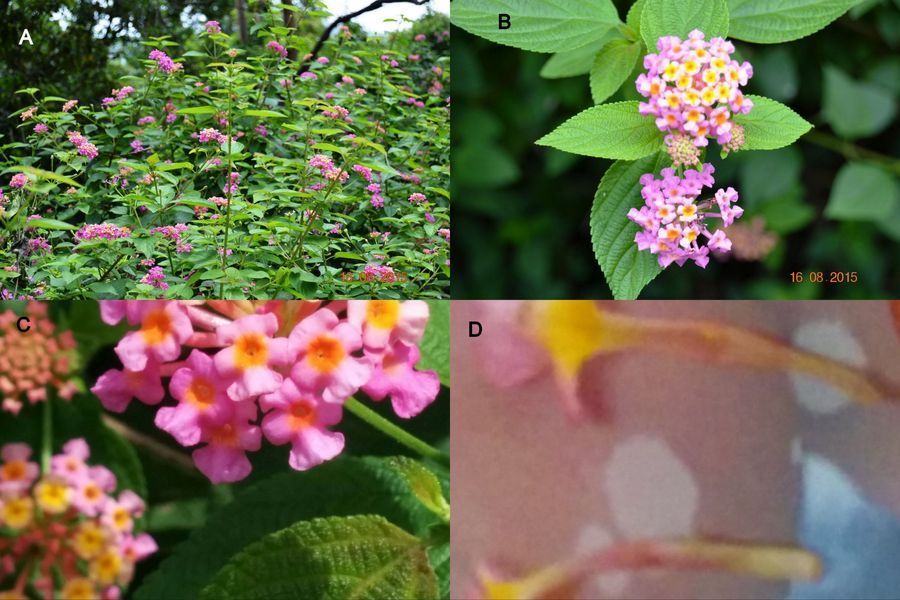
Lantana in bloom at Valparai
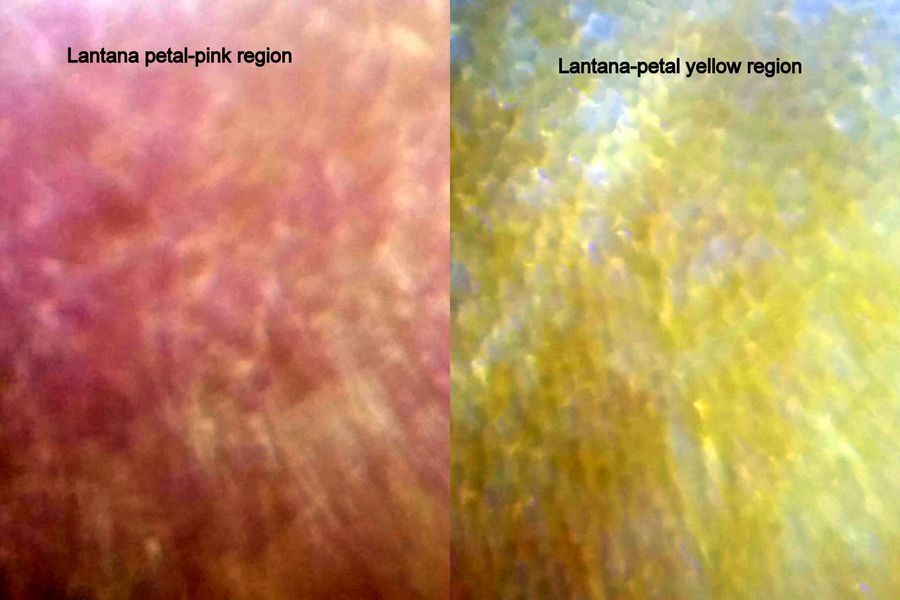
Regions of petal under foldscope

Lantana trichomes. First 5 panels are trichomes at the stalk of the flower. The last one (bottom right) are trichomes at the mouth of the corollar tube
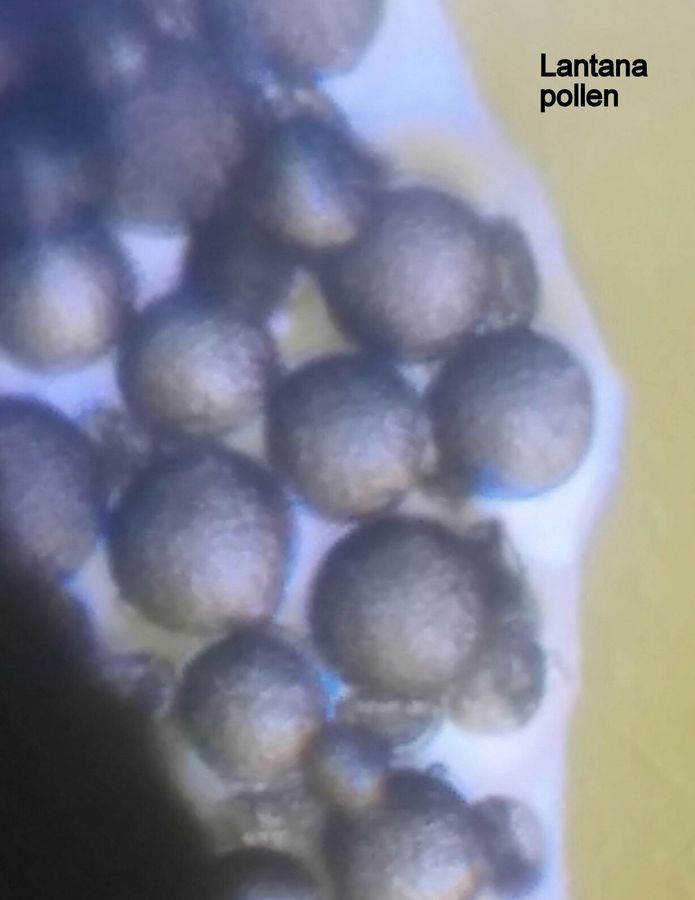
Pollen size ~40-50 microns
I saw at least 4 types of trichomes. 3 of them at the at the stalk of the petal and fourth at the mouth of the corollar tube (where the petals fuse together). One thing that caught my attention was that the flower was constantly secreting something and even after a few hours of plucking them, my fingers would feel a little wet. Note that in the pollen pictures above the pollen are spherical and have a crumple structure stuck to them, reminding me of previous experiments where pollen expand on hydration and often lose their outer coat and become spherical.
Amidst the tea plantations, I searched pretty hard and found one tea flower. Didnt find trichomes easily on the petal, although I didnt check the lower surface. They had nice yellow pollen.
I saw at least 4 types of trichomes. 3 of them at the at the stalk of the petal and fourth at the mouth of the corollar tube (where the petals fuse together). One thing that caught my attention was that the flower was constantly secreting something and even after a few hours of plucking them, my fingers would feel a little wet. Note that in the pollen pictures above the pollen are spherical and have a crumple structure stuck to them, reminding me of previous experiments where pollen expand on hydration and often lose their outer coat and become spherical.
Amidst the tea plantations, I searched pretty hard and found one tea flower. Didnt find trichomes easily on the petal, although I didnt check the lower surface. They had nice yellow pollen.
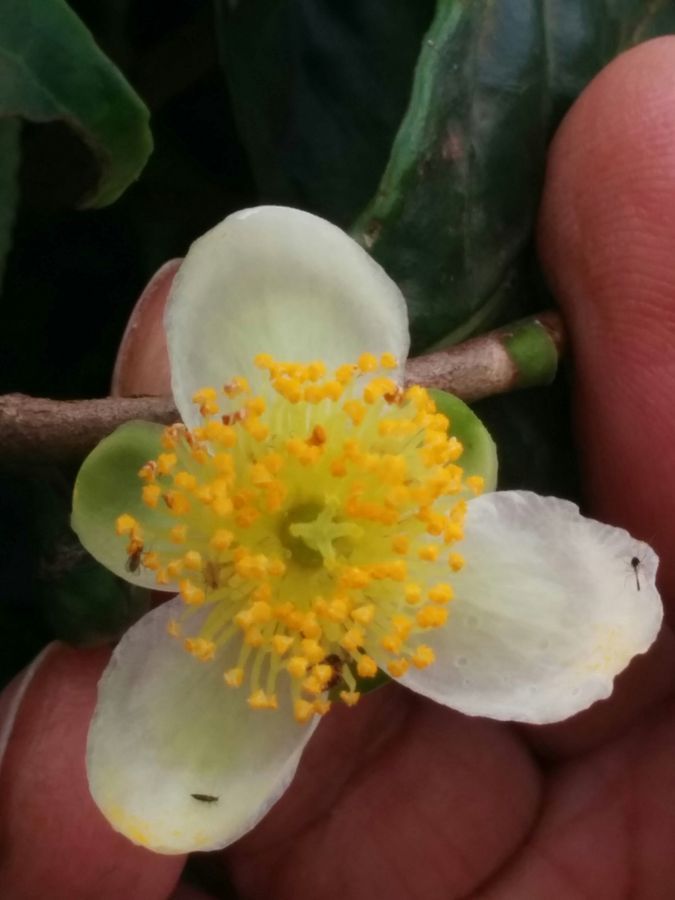
Tea flower
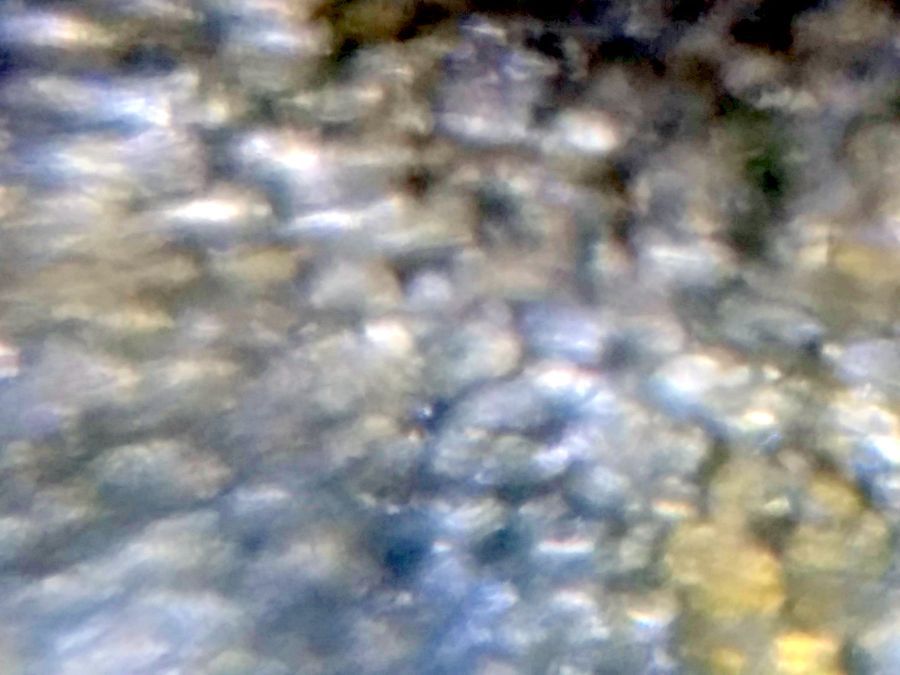
Tea petal foldscope
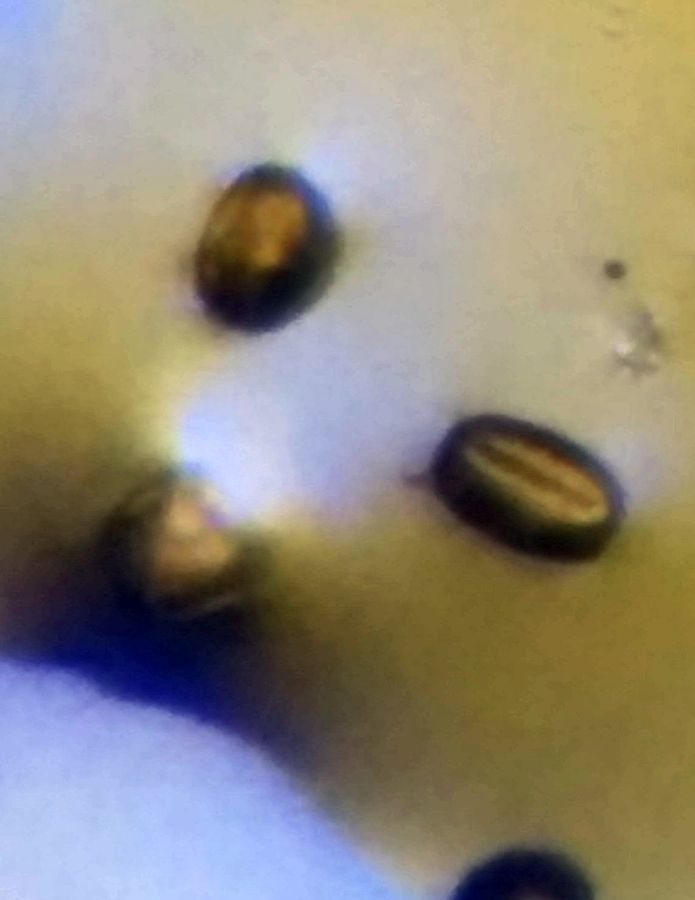
Tea pollen. ~ 40 microns in size
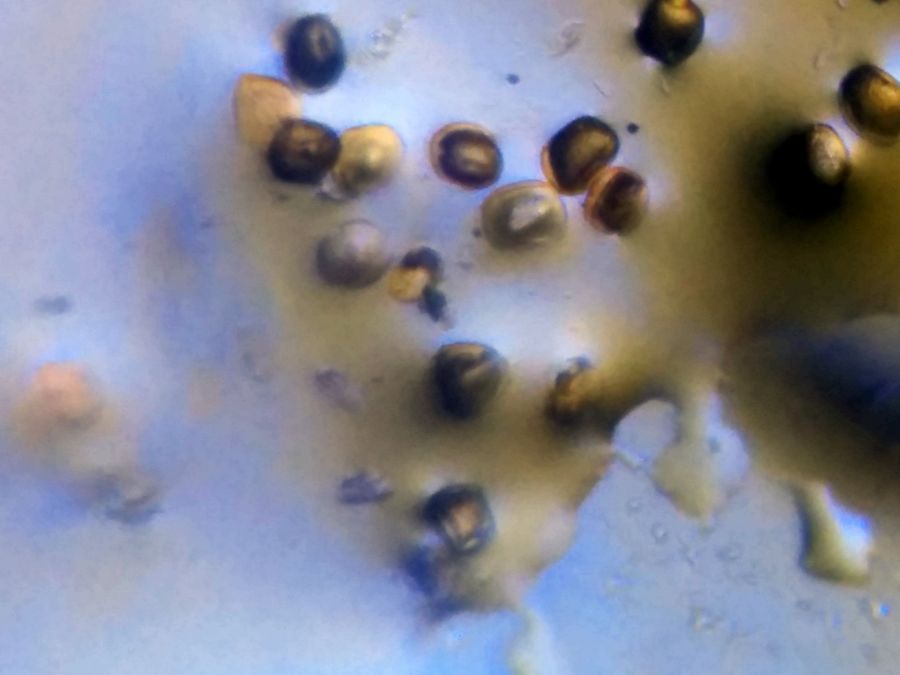
More tea pollen
and finally, since the flame of the forest tree (Palash, Butea monosperma ) was in full bloom, I of course foldscoped this famous legume with leathery petals. It made tremendous amount of pollen and also had a very interesting trichome (Click on pictures for hi-res images).
and finally, since the flame of the forest tree (Palash, Butea monosperma ) was in full bloom, I of course foldscoped this famous legume with leathery petals. It made tremendous amount of pollen and also had a very interesting trichome (Click on pictures for hi-res images).
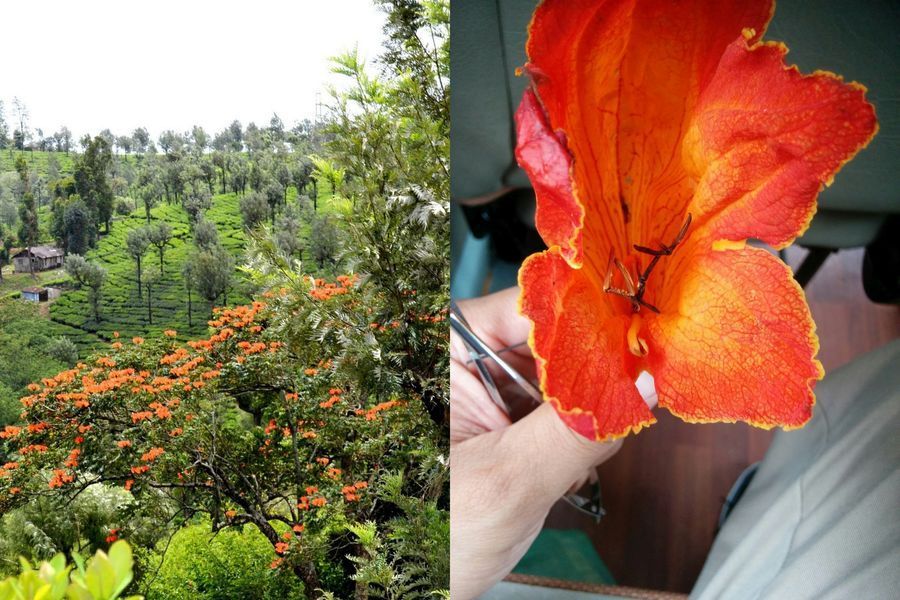
Butea monosperma, tree and flower
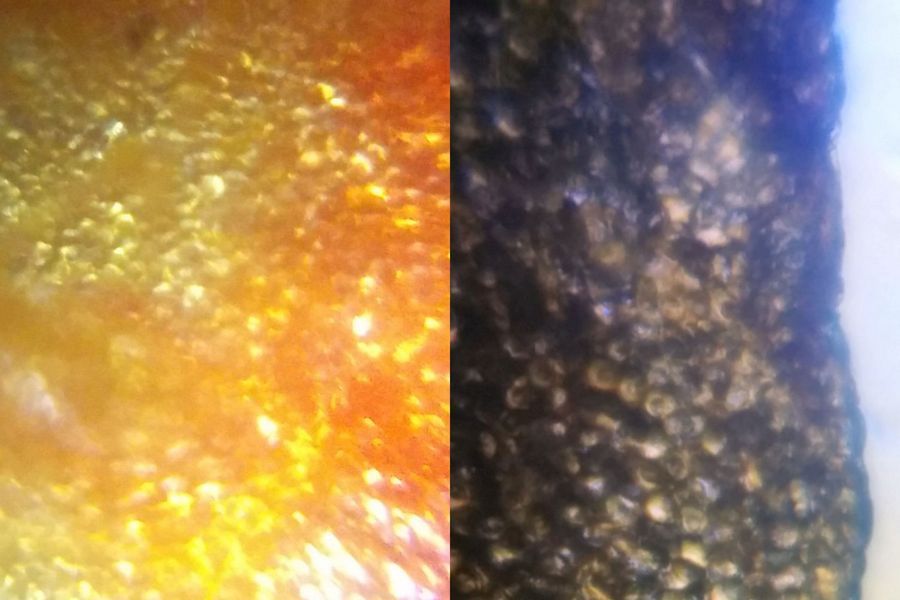
Butea-petal foldscope 140x
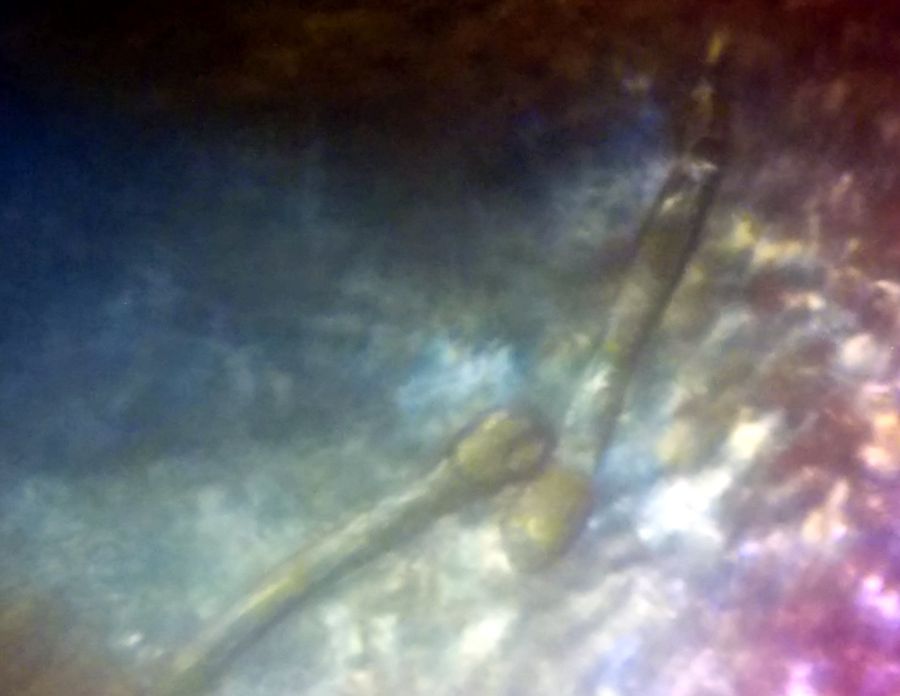
Butea trichome

Butea pollen ~ 40 microns
The Western Ghats are home to about 5000 unique species of flowering plants and I was told that I would need to come earlier in the year, before the rains, to observe their flowers. I am dreaming of project where kids and people join arms across the Western Ghats and use the foldscope to study various biological problems. If you visit Valparai, dont forget to get a cup of chai, it is stupendous and local tea shop owners have fascinating stories of elephants in rut, leopards and old memories of tigers. Any one who spends his life in the WG has interesting stories.
Upon returning to Chennai, with great excitement I contacted my walking handbook, Dr. R. Bhanumathi and asked her about this wonderful species that was widespread in Valparai, those flowers in Figure 3. Her reply, “Oh this is the common weed Latana camara, an invasive species from the americas”. It took me a few moments to digest the enormity of this statement. I went back to the books and realized that Lantana is a toxic and highly invasive species which cannot be eaten by many animals, and prevents the growth of native plant species. Its growth along Valparai is a clear indicator of a changing ecosystem. The ripple effect of this plant and the tea estates is quite obvious. I feel a tiny bit of guilt when I drink my cup of chai. The cost we pay for this cup is quite enormous. Yet, perhaps trees like the flame of the forest tree stand as the silver lining. Perhaps with some care, we can reverse the damage using native species. Perhaps it is really time to find new spaces (buildings!) to grow plants that we consume. Perhaps one really needs to pay attention to E.O. Wilson when he says one should link forests to form a continuous chain so that whatever biodiversity remains has more space to roam. It was indeed an eye-opener for me. I now understand why the great Royal Bengal tiger no longer prowls in this part of the mountain, where once they were abundant.
P.S. In relation to the above, I just discovered this interesting portal to spot alien invasive species . I think it is a great initiative.
The Western Ghats are home to about 5000 unique species of flowering plants and I was told that I would need to come earlier in the year, before the rains, to observe their flowers. I am dreaming of project where kids and people join arms across the Western Ghats and use the foldscope to study various biological problems. If you visit Valparai, dont forget to get a cup of chai, it is stupendous and local tea shop owners have fascinating stories of elephants in rut, leopards and old memories of tigers. Any one who spends his life in the WG has interesting stories.
Upon returning to Chennai, with great excitement I contacted my walking handbook, Dr. R. Bhanumathi and asked her about this wonderful species that was widespread in Valparai, those flowers in Figure 3. Her reply, “Oh this is the common weed Latana camara, an invasive species from the americas”. It took me a few moments to digest the enormity of this statement. I went back to the books and realized that Lantana is a toxic and highly invasive species which cannot be eaten by many animals, and prevents the growth of native plant species. Its growth along Valparai is a clear indicator of a changing ecosystem. The ripple effect of this plant and the tea estates is quite obvious. I feel a tiny bit of guilt when I drink my cup of chai. The cost we pay for this cup is quite enormous. Yet, perhaps trees like the flame of the forest tree stand as the silver lining. Perhaps with some care, we can reverse the damage using native species. Perhaps it is really time to find new spaces (buildings!) to grow plants that we consume. Perhaps one really needs to pay attention to E.O. Wilson when he says one should link forests to form a continuous chain so that whatever biodiversity remains has more space to roam. It was indeed an eye-opener for me. I now understand why the great Royal Bengal tiger no longer prowls in this part of the mountain, where once they were abundant.
P.S. In relation to the above, I just discovered this interesting portal to spot alien invasive species . I think it is a great initiative.
Sign in to commentNobody has commented yet... Share your thoughts with the author and start the discussion!

 0 Applause
0 Applause 0 Comments
0 Comments_300x300.jpeg)

















